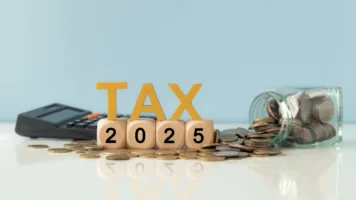What Does Comparison Rate Mean?
Financial experts often advise borrowers to check the comparison rate of a loan before making any important financial decisions. But what is a comparison rate and why is it so important? We look into the meaning of ‘comparison rate’ and how you can make sure you’re getting the best deal for you.
Overview:
- What is a comparison rate?
- Comparison rate vs interest rate: what’s the difference?
- How is a comparison rate calculated?
- Can the comparison rate be lower than the interest rate?
- What does a comparison rate not include?
- What is a good comparison rate?
- Why pay attention to comparison rates?
- FAQs
What is a comparison rate?
A comparison rate is a percentage rate that helps show the true cost of a loan. It does this by calculating the interest charged on the loan plus some additional fees and charges. All lenders are legally required to display the comparison rate next to their advertised interest rates in Australia. How comparison rates are calculated, and their implementation by lenders, is regulated by ASIC (Australian Securities and Investments Commission) under the National Credit Code.
Comparison rate vs interest rate: what’s the difference?
The interest rate typically refers to the amount of interest you will be charged on your loan amount per year. This can give you an idea of what your minimum monthly repayments will be.
The comparison rate includes the interest charged on your loan amount plus additional fees or charges associated with the loan. This gives you a better idea of what the loan will cost you overall.
How is a comparison rate calculated?
As mentioned above, the formula for comparison rates is regulated by ASIC (Australian Securities and Investments Commission) under the National Credit Code. The formula for calculating comparison rates can be complicated but typically includes factors such as:
- Additional fees and charges such as establishment fees, monthly accounts fees, settlement fees etc.
- Interest rate
- Loan amount
- Loan term
- Repayment schedule (such as weekly, fortnightly, or monthly repayments)
Because these rates factor in some extra fees and charges, they are usually slightly higher than advertised rates.
While it is possible to calculate the rate on your own, this can be a difficult and confusing process. Fortunately, there are comparison rate calculators available online that can make it easier and produce a more accurate result.
Can the comparison rate be lower than the interest rate?
There are some instances where a comparison rate may be lower than the interest rate.
- Fixed rate loans: comparison rates are often lower on fixed rate loans that revert to a cheaper variable rate after the fixed period.
- Discounts: some lenders may offer borrowers introductory discounts or special offers that are lower than the current advertised interest rate. This will then reduce the overall comparison rate.
What does a comparison rate not include?
Comparison rates can be a helpful tool to keep you from getting sucked into the attractive rates advertised by lenders. But they shouldn’t be your only guide. This is because they don’t include all the extra costs associated with the loan, like:
- Government charges, such as stamp duty or registration fees
- Fees and charges associated with the loan, such as early repayment fees, break costs, late payment fees or redraw fees
So treat a comparison rate as a reminder that advertised interest rates don’t tell you the full story of what you’ll end up paying overall.
What is a good comparison rate?
A good comparison rate will give you the most accurate representation of the overall cost of your loan. However, because extra fees and charges vary from lender to lender and loan to loan, you’ll never be able to get a comparison loan that is 100% correct. So use them as a starting point for comparing loans and lenders.
Why pay attention to comparison rates?
When you’re browsing loans, the interest rate advertised by lenders can be like a siren call. It’s difficult to resist and hard to see past. But, while they’re not 100% accurate, comparison rates serve as an important reminder to resist that siren call! They encourage you to dig deeper into the fees and charges of a loan so you can make sure you know what the true cost of the loan will be.
Looking for a lender with no hidden fees? Look no further than Swoosh!
At Swoosh, you’ll know exactly what you’re paying with no hidden fees or charges, and no early repayment fees. Just fast, easy, loans up to $5000 with same day approval! So, if you’re facing an unexpected emergency, your car is in need of urgent repairs, or you’re just in need of a holiday, apply online with Swoosh today! Whatever the reason, we’ve got you covered.
FAQs
What is the difference between the fixed rate and a comparison rate of a home loan?
The fixed rate of a home loan refers to the amount of interest a lender charges to your home loan. The comparison rate, however, reflects how much the loan will cost you overall during the life of the loan.
Should I check the interest rate or comparison rate?
You should check both. The interest rate will give you a better idea of what your repayments will be, whether weekly, fortnightly, or monthly. Whereas, the comparison rate will give you a greater understanding of what the loan will cost you overall. Both are important when you’re working out whether you can afford the loan.
Do higher prices lead to higher interest rates?
Higher prices (also known as inflation) will cause the average interest rate to rise.









